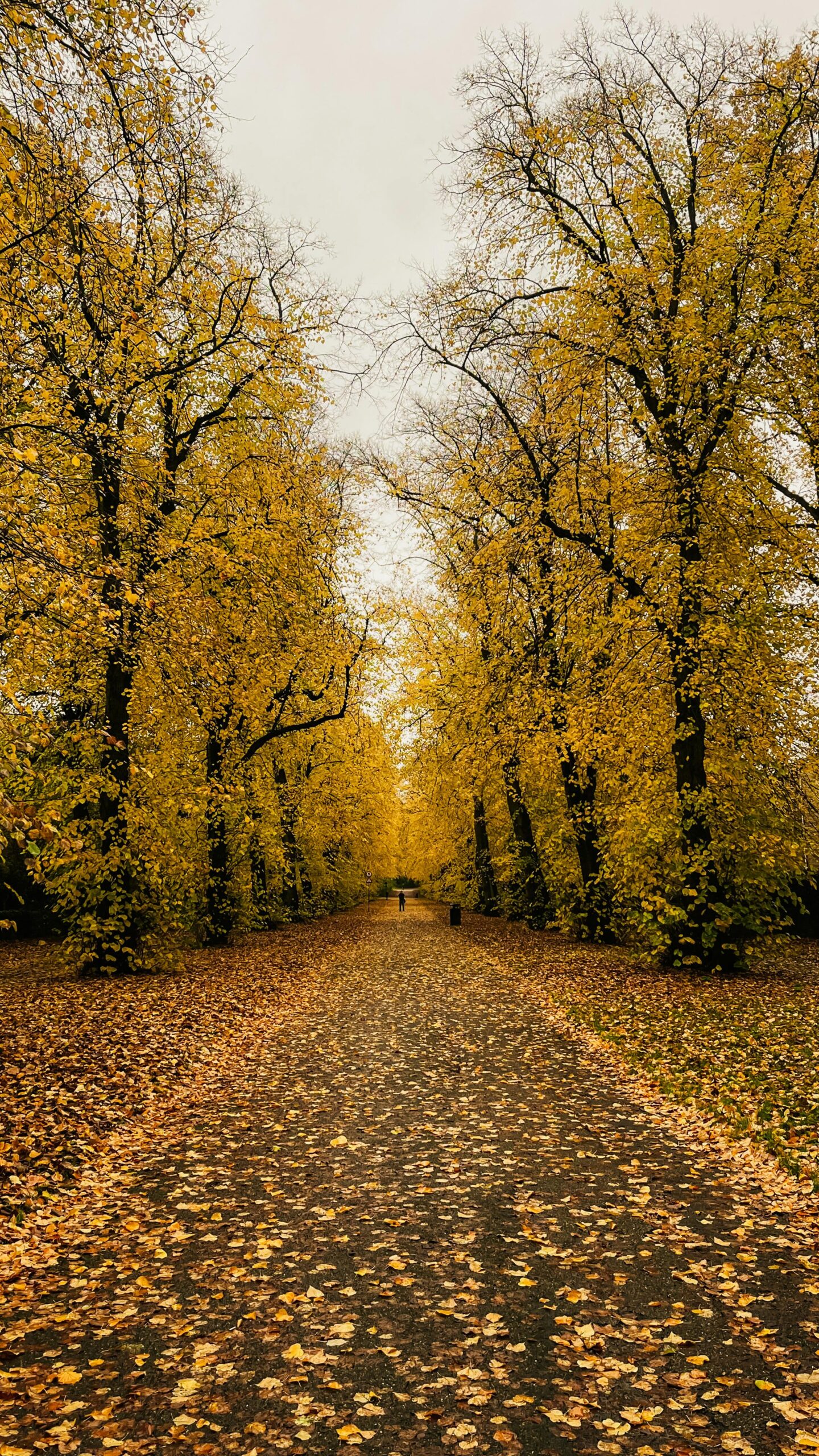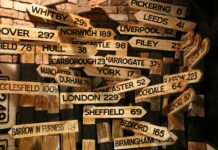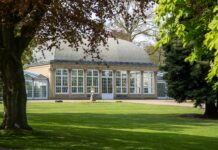Nestled in the heart of East Sussex, Sheffield Park is a captivating destination that promises an unforgettable experience for nature lovers and history enthusiasts alike. Have you ever wondered what makes this historic garden in Sussex so uniquely enchanting? From its sprawling lakes to the vibrant autumn foliage, Sheffield Park offers a picturesque escape that feels like stepping into a living painting. You’ll be amazed by the sheer variety of rare plants and majestic trees that call this park home, making it one of the most sought-after botanical gardens near Brighton. Whether you’re seeking a peaceful retreat or an inspiring spot for photography, Sheffield Park delivers on all fronts with its charming landscape and rich heritage. Did you know that this park is also famous for its spectacular autumn colour displays that attract visitors from across the UK? Explore winding paths, discover hidden corners, and uncover the secrets of this stunning garden that has been lovingly preserved for centuries. Don’t miss the chance to experience the magic of Sheffield Park — a true gem among UK’s top heritage parks. Ready to plan your visit? Keep reading to uncover insider tips and the best times to enjoy this remarkable location!
Unveiling Sheffield Park’s Hidden Gems: Top 7 Secret Spots You Must Explore
Sheffield Park: A Hidden Gem Worth Your Visit
If you ever find yourself wandering around East Sussex, you might stumble upon Sheffield Park Gardens — a place that’s as charming as it is confusing. Not really sure why this matters, but it’s got this old-world vibe that’s both peaceful and a bit quirky. The gardens and parkland spread over a vast area, making it perfect for those who likes a good walk or just wants to escape the hustle and bustle of city life.
What’s Sheffield Park all about anyway? Well, it’s a historic garden that was designed back in the 18th century by Capability Brown, who was apparently the go-to guy for landscape design back then. Whether you know who he is or not, the place is stunning with its rolling hills, lakes and old trees that look like they’ve been standing there forever. Maybe it’s just me, but I feel like these kinds of spots can transport you to a different time—like a living postcard.
A Quick Look at Sheffield Park Features
| Feature | Description | Why You’ll Love It |
|---|---|---|
| Lakes & Waterfalls | Several lakes and small waterfalls dot the park | Very scenic, perfect for photography |
| Woodland Areas | Large patches of ancient woodland to explore | Great for birdwatching and peace |
| Historic Buildings | Old houses and follies scattered around | Adds character and history |
| Seasonal Blooms | Azaleas and rhododendrons in spring | The colours are absolutely stunning |
Walking around the park, you’ll notice the variety of wildlife in Sheffield Park, from ducks and swans on the lakes to squirrels darting about in the trees. If you’re a nature lover, this place is pretty much heaven on Earth. Not that I’m an expert or anything, but the birds singing in the morning gave me a real sense of calm—though I was also worried about getting lost, since the paths can be a bit tangled.
Why go to Sheffield Park Gardens in the Spring?
Spring is definitely the time to see the gardens in their full glory. The azaleas and rhododendrons bloom with such vibrant colours, it’s like nature went overboard with the paintbrush. There’s a sort of magical feeling walking through the bushes dripping in pinks, purples, and reds. However, be warned it can get a bit crowded since everyone and their dog seems to want to see the spectacle. So if you like peace and quiet, maybe visit early morning or late afternoon instead.
Here’s a little checklist for your spring trip:
- Wear comfy shoes (the paths can be muddy after rain)
- Bring a camera (or your phone, if you’re into that)
- Pack a picnic (there are spots perfect for a lazy lunch)
- Don’t forget bug spray (those midges can be pesky)
- Check the weather (because British weather is as unpredictable as ever)
Maybe it’s just me, but I always forget to check the weather and end up soaked or baked in the sun. So, learning from my mistakes, you’ve been warned!
Getting There and Around
Sheffield Park is located near Uckfield, which is easily reachable by car or train. If you’re coming via public transport, the nearest station is Sheffield Park railway station, which itself is part of a heritage line. Not exactly a high-speed train, but it adds a bit of charm to your trip. From there, it’s a short walk to the garden entrance.
If you drive, there’s parking available but it fills up quickly during peak season — so showing up early is a smart move. Entrance fees apply, but they’re reasonable considering the amount of beauty and nature you get to enjoy.
Top Tips for Visiting Sheffield Park
- Avoid weekends if you don’t like crowds
- Bring a map (the signposts can be a bit confusing)
- Visit the cafe for a cuppa and some local treats
- Take your time — there’s no rush in a place like this
- Look out for special events, like guided tours or art workshops
The cafe at Sheffield Park is surprisingly good, with homemade cakes and decent coffee. Not the kind of place you’d expect in a garden, honestly, but it’s a nice bonus when you’ve been walking around for hours.
The History Bit (Because Every Place Has One)
Sheffield Park was once the estate of the Earl of Sheffield and it’s been through quite a few changes over the centuries. The gardens were neglected for a while in the mid-20th century but revived by a dedicated group who wanted to bring back its former glory. It’s a reminder that sometimes, even the most beautiful places need a bit of TLC to keep them alive.
Wildlife Spotting in Sheffield Park
If you’re into wildlife spotting, here’s a quick
How Sheffield Park’s Stunning Natural Beauty Transforms with Every Season
Sheffield Park: A Hidden Gem You Might (or Might Not) Know About
If you ever find yourself wandering about East Sussex and thinking “what the heck should I do today?”, Sheffield Park is probably a spot you’d want to check out. It’s not just any park, it’s one those places that makes you feel like you’ve stepped into a painting or a novel. Not really sure why this matters, but Sheffield Park has a history that’s older than most of the memes you see on the internet, so that’s a bonus, innit?
Let’s dive into some of the things that make Sheffield Park and Garden in East Sussex a must-visit, or at least a place you might want to add to your list if you’re into stuff like history, nature, or just fancy a bit of peace and quiet (which, honestly, is rare these days).
A Little History (Because We All Love a Bit of Nostalgia)
Sheffield Park was created in the late 1700s by the 2nd Earl of Sheffield. Yeah, that’s right, it’s got aristocratic roots! The gardens are designed in the famous English landscape style by Capability Brown, who was known for making landscapes look like they popped straight out of a dream. But don’t get me wrong, it’s not just about old trees and fancy lawns; there’s a lot more if you look close enough.
| Feature | Description |
|---|---|
| Established | Late 18th Century |
| Designer | Capability Brown |
| Location | East Sussex, England |
| Key Attractions | Lakes, Woodlands, Rhododendrons, Azaleas |
| Accessibility | Open all year, some areas wheelchair friendly |
The Gardens: Where Nature Decides to Show Off
Now, I’m not a gardener or anything, but the Sheffield Park garden’s rhododendrons and azaleas are pretty impressive, especially when they’re in full bloom. It’s like the park wears its Sunday best every spring and summer. The lakes and water features adds a nice touch too — some say they are so tranquil, you could probably hear a pin drop if the local birds let you.
Why You Should Visit Sheffield Park (Even If You’re Not Into Parks)
- It’s a perfect spot for a picnic, which probably means you should bring some snacks unless you want to starve.
- Birdwatchers will find it a right treat; apparently, there’s a bunch of rare species hanging about.
- The walking trails are good for all ages, so if you’re dragging your kids or your gran along, everyone should be happy enough.
- Photography lovers, listen up: the scenery here is Instagram gold. Trust me, your feed will thank you.
Wait, did I mention the steam train? No? Well, there’s a heritage railway nearby called the Bluebell Railway that connects to Sheffield Park station. It’s a bit of a quirky bonus if you want to make a day of it and pretend you’re in a period drama or something.
Table of Activities at Sheffield Park
| Activity | Best Time to Visit | Notes |
|---|---|---|
| Rhododendron Viewing | Late April to June | Peak bloom, very colourful |
| Birdwatching | Year-round | Bring binoculars |
| Walking Trails | Spring to Autumn | Some trails muddy after rain |
| Steam Train Rides | Selected days (check schedule) | Family-friendly, photo ops |
What About The Practical Stuff?
If you’re travelling by car, Sheffield Park has parking facilities but it can get crowded during weekends and holidays. Maybe it’s just me, but I feel like parking spots are always the first thing to disappear in popular places. Public transport is available but might require some planning — best to check timetables in advance so you don’t get stuck waiting in the cold.
There’s a cafe on-site which does reasonable teas and cakes but don’t expect Michelin-star dining. It’s more the “grab a cuppa and a scone” kind of vibe, which is perfect after a long walk.
Things You Might Not Know About Sheffield Park
- The gardens are actually part of a National Trust property, which means your entry fee goes to helping maintain it.
- It’s a popular spot for weddings, so you might bump into a bride or two during your visit.
- The park hosts seasonal events, like guided walks and plant fairs, which can be really interesting if you’re into that sort of thing.
Quick Tips for Visiting Sheffield Park
- Wear comfy shoes because the grounds are big and you’ll want to explore every inch.
- Bring a camera or a smartphone with plenty of battery — you WILL want to take pictures.
- Check the weather forecast; it’s England, so
Discover Sheffield Park’s Best-Kept Secrets: A Guide to Off-the-Beaten-Path Attractions
Sheffield Park: A Quirky Day Out You Didn’t Know You Needed
If you ever find yourself in East Sussex and got nothing better to do, Sheffield Park is the place you probably should check out. It’s this lovely, sprawling garden that kinda feels like nature just threw a party and forgot to clean up afterwards. Honestly, I been there twice and it never looks exactly the same—maybe because of the seasons or maybe because I’m just not paying attention, who knows?
The Sheffield Park gardens history is pretty interesting if you’re into that sort of thing, which not everyone is, but hey, knowledge is power or so they say. The park was first designed in the 18th century by Capability Brown, a bloke famous for making gardens look natural but, ironically, they were all carefully planned. Not really sure why this matters, but apparently, Sheffield Park was one of his finest works. It’s got all these lakes, rolling lawns, and woods that look perfect for a picnic or a bit of quiet contemplation (if you can find any quiet when kids are around).
Why visit Sheffield Park? Here’s a quick rundown in a table because I feel like it makes things easier to digest than just paragraphs:
| Feature | Details | Best time to visit |
|---|---|---|
| Lakes and Water Features | Several interconnected lakes with wildlife | Spring and Summer |
| Rhododendron Collection | Massive and colourful, peak bloom in late May | Late May |
| Walking Trails | Various trails, some easy, some a bit challenging | All year round |
| Wildlife Watching | Ducks, swans, and sometimes a cheeky squirrel | Early mornings |
One thing I love about Sheffield Park National Trust garden is the sheer variety of things to see and do. You can stroll around for hours, and still feel like you’ve only scratched the surface. There’s also a café on site, which sells the kind of cake that makes you question why you ever bought supermarket stuff. The prices are a bit steep, but hey, it’s all part of the experience, right?
Maybe it’s just me, but I always find the rhododendrons at Sheffield Park gardens to be a bit overhyped. They’re colourful and all, but sometimes it feels like everyone’s just standing around taking photos without actually enjoying the place. Still, the explosion of colours in late spring is worth a look, especially if you’re into taking pretty pictures for your Instagram or whatever.
Here’s a quick list of practical tips if you’re planning to visit Sheffield Park:
- Wear comfortable shoes, because the paths can get muddy and slippery after rain (which is often, let’s be honest).
- Bring a picnic blanket if you want to avoid the café queues and overpriced sandwiches.
- Don’t forget your camera or smartphone for snapping those “look how pretty nature is” shots.
- Check the National Trust website for opening times and any events, as these can change with the season.
- If you’re coming with kids, the park has open spaces perfect for running about, but keep an eye on them near the water.
Talking about the wildlife at Sheffield Park, it’s not exactly like you’re gonna see a lion or an elephant, but the ducks and swans are pretty entertaining to watch. I swear one time I saw a squirrel pull off some kind of acrobatic stunt that made me question my own coordination. There’s also plenty of birds, so if you’re into birdwatching, this place could be your new favourite haunt.
To give you a better picture, here’s a breakdown of the main wildlife you might encounter at Sheffield Park:
| Animal Type | Description | Where to Spot |
|---|---|---|
| Ducks | Common mallards, very friendly sometimes | Around the lakes |
| Swans | Majestic, often with cygnets if you’re lucky | Near the bigger ponds |
| Squirrels | Grey squirrels, surprisingly agile | Throughout the wooded areas |
| Various Birds | Including robins, blackbirds, and tits | Around trees and bushes |
You might be wondering about accessibility, and Sheffield Park does a decent job here. Most of the main paths are wheelchair friendly, which is great if you’re bringing along someone who needs it. However, some of the trails in the woods can be a bit rough, so maybe leave the fancy shoes at home for those parts.
One quirky thing about Sheffield Park that I always found amusing is the old iron bridge over one of the lakes. It looks like something out of a Jane Austen novel, but also kinda like it might collapse if too many people stand on it. Not really sure why this matters, but it adds a bit of character, don’t it?
If you’re thinking about the best
Why Sheffield Park is a Must-Visit for Nature Lovers and Photography Enthusiasts
Sheffield Park: A Hidden Gem You Might Not Knew About
If you ever find yourself wandering in East Sussex, you might want to drop by Sheffield Park gardens. Now, it ain’t just any park, its a place where history, nature, and a bit of chaos comes together in a way that’s kinda hard to explain. I mean, not really sure why this matters, but people keep going on about the Sheffield Park and Garden National Trust spot like it’s some kinda magical place. Maybe it is, maybe it isn’t, but the fact remains you can’t really ignore it if you’re into greenery and old-school English charm.
What’s so special about Sheffield Park?
It’s one of those classic English landscape gardens, designed by Capability Brown, who is basically the OG of landscape gardening. If you don’t know him, he made gardens look natural, but in a very planned way. Sounds confusing? Yeah, a bit like me trying to explain it. But Sheffield Park is full of sweeping lakes, rolling lawns, and loads of trees that look like they’ve been there for centuries. Not to mention the wildflower meadows — perfect if you’re into flowers or, erm, just want to look at something pretty while pretending you know a thing or two about botany.
Table 1: Quick Facts about Sheffield Park Gardens
| Feature | Details |
|---|---|
| Location | East Sussex, England |
| Managed by | National Trust |
| Type | Landscape garden |
| Designer | Capability Brown |
| Main attractions | Lakes, Rhododendrons, Azaleas |
| Best time to visit | Spring and Early Summer |
Now, talking about the Sheffield Park lakes and waterfalls, they’re pretty nifty. The way the water flows, it’s like the park itself is telling a story, or maybe just showing off. I can’t decide which. The waterfalls are not massive or anything, but they add a nice little soundtrack to your stroll. I swear, if you close your eyes, you could almost hear the gossip of old gardeners from centuries ago. Or maybe that’s just me being weird.
What to do when you get there?
Well, you can walk around, take a boat ride on the lake (yes, you read that right – there’s a boat ride!), or just plonk yourself down somewhere with a picnic. Seriously, if you’re thinking about a day out with the family or just want some fresh air, the Sheffield Park picnic spots are pretty alright. Just watch out for the squirrels, they’re like tiny furry bandits trying to steal your lunch. Not that I’m speaking from experience or anything.
List 1: Activities at Sheffield Park
- Walking trails through the garden
- Boat rides on the lake
- Picnic areas with scenic views
- Seasonal events (like bluebell season)
- Bird watching (bring your binoculars!)
But let’s not forget the bluebells – oh, the famous bluebells. Every spring, the woods at Sheffield Park become carpeted in these stunning blue flowers. It’s like stepping into a fairytale, only with muddy boots and maybe a few annoying tourists snapping photos. The Sheffield Park bluebell woods are a major draw, and honestly, it’s worth timing your visit just for that. If you don’t like crowds, maybe best to stay away during peak bluebell season, but then again, who wants to miss out on that kinda spectacle?
Oh, and if you’re a bit of a history buff, the park has its own stories to tell. Built by the Earl of Sheffield in the 18th century, it’s been passed through many hands, each adding their own touch. Some bits might look a bit neglected or wild, but that’s part of its charm, right? Plus, it’s a great spot for those who loves taking photographs—especially if you’re into capturing the early morning mist or the golden hour light.
Practical Insights for Your Visit
| Tip | Details |
|---|---|
| Opening times | Usually 10am-5pm, check National Trust site |
| Entry Fee | Entrance fee applies, but worth every penny |
| What to bring | Comfortable shoes, camera, picnic, binoculars |
| Accessibility | Paths are mostly wheelchair friendly, but some rugged areas exist |
| Food and Drink | Café on site, but pack your own snacks if you prefer |
Maybe it’s just me, but I feel like places like Sheffield Park don’t get the credit they deserve. It’s not some flashy theme park, but it’s got that old-school English countryside vibe that just makes you feel a bit calmer, even if the kids are running wild. If you’re after a quick break from the hustle and bustle of city life, the **Sheffield Park countryside
Exploring Sheffield Park: 5 Unique Wildlife Encounters You Can’t Miss
Sheffield Park: A Quirky Dive into Nature’s Hidden Gem
If you ever find yourself wandering about in East Sussex, you might stumble across Sheffield Park and Garden – a place that’s not exactly your run-of-the-mill park. Honestly, I wasn’t really sure why everyone keeps raving about it at first, but there’s just something about Sheffield Park landscape that pulls you in, even if you’re not a total nature buff.
Getting There and What to Expect
Firstly, getting to Sheffield Park is pretty straightforward, though the directions can sometimes be a bit confusing if you rely solely on your phone’s map. It’s near Uckfield, which is a small town that hardly anyone outside East Sussex might have hear of. The parking space isn’t massive, so if you’re driving during peak times, maybe you’ll have to park a bit far away and hoof it in. Not a big deal, unless you forgot your comfy shoes at home.
Once inside, you’ll be greeted by sprawling gardens that were designed in the 18th century. The Sheffield Park gardens history is pretty fascinating, with the gardens being shaped by Capability Brown, who was sort of a big deal back in the day in garden design. There are lakes, rolling hills, and enough trees to make you forget you’re only a couple hours from London.
Here’s a quick rundown of the main attractions you shouldn’t miss:
| Attraction | Why Visit? | Best Time to See |
|---|---|---|
| The Lakes | Beautiful water reflections and swans | Spring and Autumn |
| The Arboretum | Collection of rare trees | Late Spring |
| The Walled Garden | Colourful blooms and seasonal flowers | Summer |
| Woodland Trails | Peaceful walks through natural woodland | All year round |
Maybe it’s just me, but I always find the lakes the most calming part of the park. There’s something about watching ducks paddling about that makes you forget your emails and deadlines for a while.
Wildlife and Nature: More Than Just Pretty Views
If you think Sheffield Park wildlife spotting is just a bore, think again. The park is buzzing with all sorts of critters, from cheeky squirrels that are surprisingly bold (they might even try to snatch your sandwich if you’re not careful!) to birds that seem to outnumber the visitors on some days.
There’s a variety of birds like kingfishers, wagtails, and if you’re lucky, you might catch a glimpse of a heron. The best place to see them is near the lakes early in the morning, or so the locals say. I tried once, but mostly ended up with photos of blurry wings and a lot of frustration.
Gardens and Seasonal Highlights
One of the standout things about Sheffield Park seasonal events is how the gardens change throughout the year. Spring brings a riot of colours with azaleas and rhododendrons in full bloom, turning the park into a bit of a floral wonderland. Summer is when the walled garden really comes alive with vibrant flowers, and autumn paints the trees in fiery reds and oranges. Winter, however, is a quieter time, but the bare branches and frosty mornings add a different kind of charm, if you’re into that sort of thing.
Here’s a seasonal calendar for what you might wanna pack or prepare if you plan to visit:
| Season | What to Bring | What to Expect |
|---|---|---|
| Spring | Camera, light jacket | Blooms, mild weather |
| Summer | Sunscreen, picnic blanket | Warm weather, busy park |
| Autumn | Waterproof boots, cosy scarf | Colourful leaves, cooler temps |
| Winter | Warm coat, gloves | Frosty scenes, peaceful walks |
Things to Do (Apart From Just Walking Around)
Not gonna lie, walking is the main activity here, but there are some other fun bits if you’re looking to spice up your visit. There’s a café on site, which does a decent cuppa and some snacks — nothing fancy, but hey, it’s a park, not a Michelin-star restaurant. Also, the park hosts occasional events like garden tours, photography workshops, and sometimes even outdoor theatre, which sounds a bit posh for a park, but I’m not complaining.
For families, the park offers a children’s play area and open spaces where kids can run wild. Just keep an eye out for those cheeky squirrels I mentioned earlier — they’re like little furry ninjas.
Practical Tips for Visiting Sheffield Park
| Tip | Explanation |
|---|---|
| Arrive early on weekends | To avoid crowds and get better parking |
Conclusion
In conclusion, Sheffield Park stands as a remarkable example of natural beauty and historical significance, offering visitors a unique blend of serene landscapes, vibrant seasonal colours, and rich heritage. From its stunning lakes and woodland trails to the meticulously maintained gardens, the park provides a perfect retreat for nature lovers, photographers, and families alike. Its accessibility and range of activities make it an ideal destination for a day out, whether you seek peaceful reflection or an engaging outdoor adventure. As the seasons change, Sheffield Park continually reveals new charms, inviting repeated visits throughout the year. To truly appreciate the park’s splendour and contribute to its preservation, consider planning your visit soon and supporting local conservation efforts. Embrace the opportunity to explore this captivating green space and experience firsthand the tranquil beauty that Sheffield Park has to offer.













